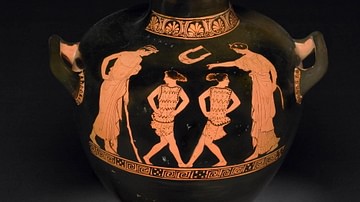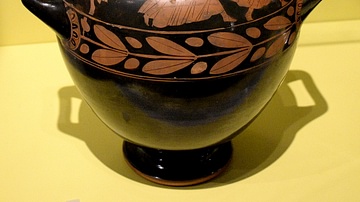Illustration
A hydria (plural: hydriai) was an ancient Greek vessel in clay or bronze used to carry water. Two horizontal handles were used to carry the vessel and one vertical handle to pour. This example is from Attica, c. 500 BCE and the main body depicts two sirens with grapes and vine leaves. (British Museum, London).
Cite This Work
APA Style
Museum, T. o. t. B. (2013, April 23). Hydria. World History Encyclopedia. Retrieved from https://www.worldhistory.org/image/1151/hydria/
Chicago Style
Museum, Trustees of the British. "Hydria." World History Encyclopedia. Last modified April 23, 2013. https://www.worldhistory.org/image/1151/hydria/.
MLA Style
Museum, Trustees of the British. "Hydria." World History Encyclopedia. World History Encyclopedia, 23 Apr 2013. Web. 13 Apr 2025.






